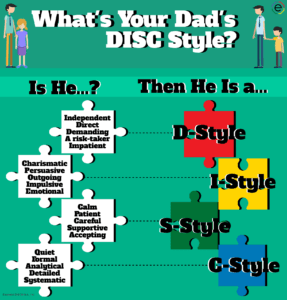Team DISC Assessments are highly useful tools in helping identify a team’s preferred way of doing things, natural strengths, and areas of development. In addition, team DISC reports can provide supporting information on how teams can work more effectively.
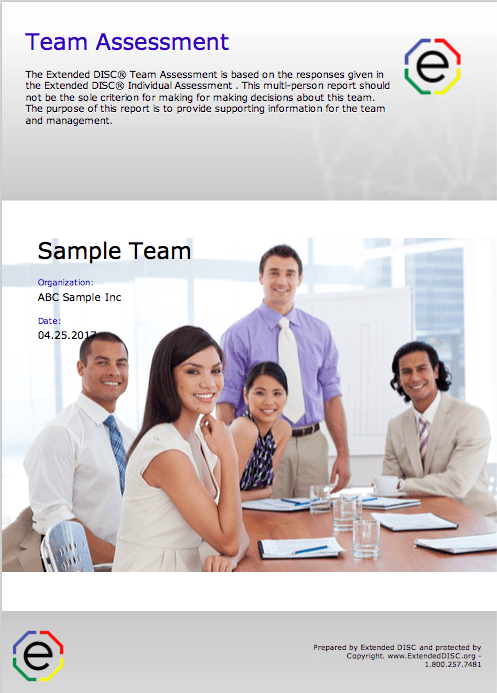
We rely on teamwork to get things done, but not all teams function smoothly. Teams need tools that help them to become more effective; even successful teams can improve. Team DISC Assessments can provide supportive information for teams to achieve success.
Stop! Before You Use Team DISC Assessments!
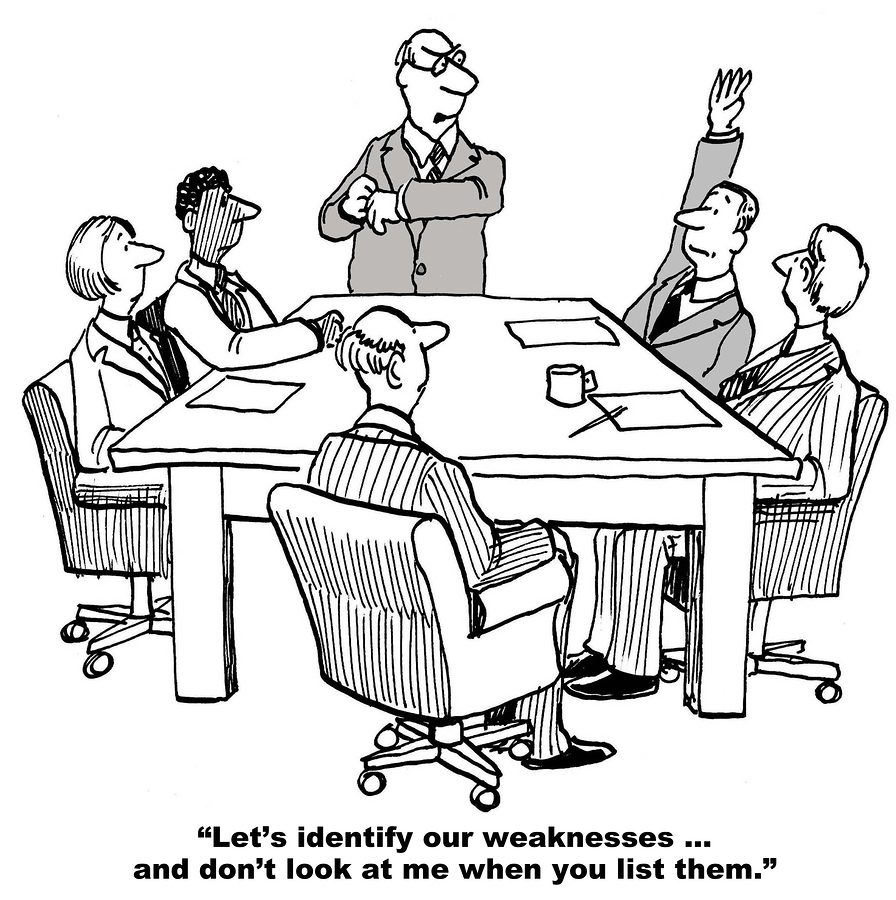
First off, team members only need to take one DISC test. The resulting DISC report is designed to help the respondent understand his/her own preferred ways of behaving. One of the goals, leading to the team DISC assessment, is to increase self-awareness and understanding of how each respondent interacts within the team. You can use the 4 Steps to Effective Communication approach to debrief the individual’s DISC profile. Start by helping team members understand the 4 DISC types. Then focus on their own styles, learning to identify DISC styles of others, and finally, practice how to adapt to be more successful. The goal here is to increase self-awareness.
After the individual review, now focus on how the respondent fits in the team. Team members can better understand how their preferred DISC personality type shows up in a team. They learn what strengths they can bring to a team. In addition, they can become aware of how their team members view their DISC style. They can use the DISC results to learn how to be an even more effective team member.
Where Can You Use Team DISC Assessments?
Now, respondents can come together as a group and progress to use the team results. Team DISC Assessments can help identify the relationship dynamics of teams. However, there is more than one way to use team results beyond just the team setting. Managers can use it to better manage and lead their employees. CEOs and business owners can use the DISC tool to make strategic decisions. You can also use the team DISC tool at an organizational level. For example, how can we better understand why we have high turnover rates? Are certain DISC profile types leaving our company at a higher rate than others? Leadership then may have more valuable information to make strategic decisions.
The bottom line is that it’s not just a team development tool. Our webinar and blog will address more ways to use team DISC assessments in a continuing Using Team DISC Assessments series.
Using Team DISC Assessments in Team Applications
Teams have challenges that may be highly visible, including inter-personal issues, conflicts, and friction. Therefore, it’s difficult to understand what’s underneath all those overt and sometimes distracting issues. The team report maps can really simplify complex issues because it’s a visual image of how team members relate to one another.
Another strength of DISC is that it does not make value judgments; there is no good or bad, high or low scores when it comes to DISC styles. We simply have preferred ways of doing things. Teams can then have a safe and well-defined setting to discuss and understand their team’s dynamics. Team members can talk about their teams using the DISC language in a way that is non-judgmental. Additionally, people can be more self-aware when seeing team members’ results and how their own style interacts with others.
Why Start with Team DISC Assessments Exercise?
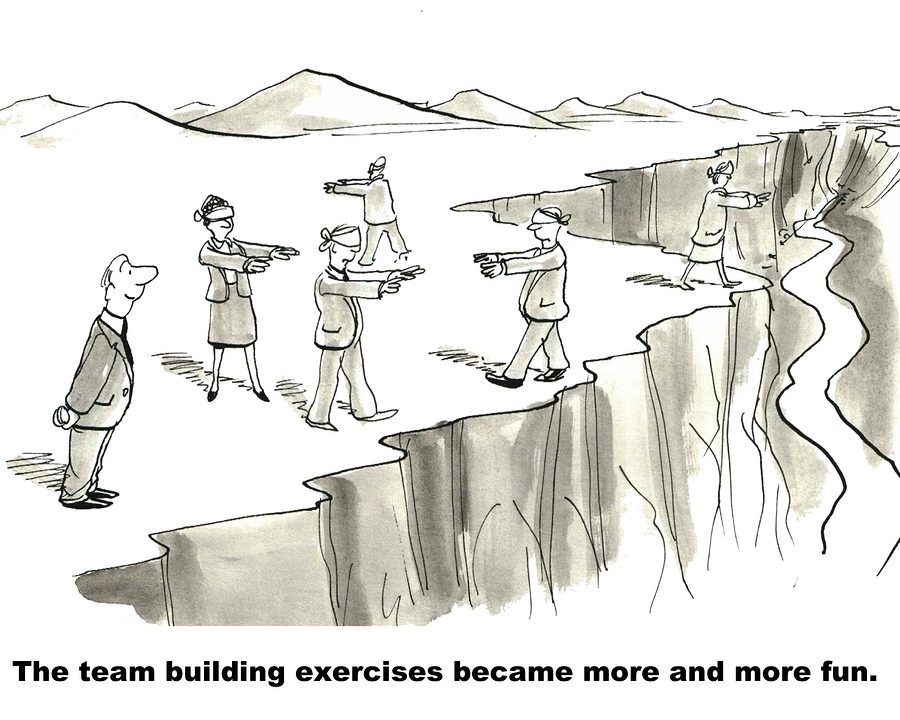
There is no set way to use the team assessment, but a great place to start is with a DISC exercise. Do it before presenting the team DISC results. A simple DISC exercise can help to start discussion.
First, ask the team to identify their primary goals to achieve success. Next, ask team to identify the behaviors needed for the team members to practice daily to achieve those goals. Lastly, map the behaviors in the DISC quadrants. Try using a blank DISC Diamond flip-chart paper. Focus solely on behaviors when mapping on the DISC quadrants.
Typically, behaviors tend to focus in on two of the DISC quadrants. Before further discussion, ask the team to agree, that if they practice these identified behaviors they will more likely reach their goals. Now you have an upfront commitment from the team. It’s candid feedback.
Understanding the Team DISC Profile Using the Shotgun Map
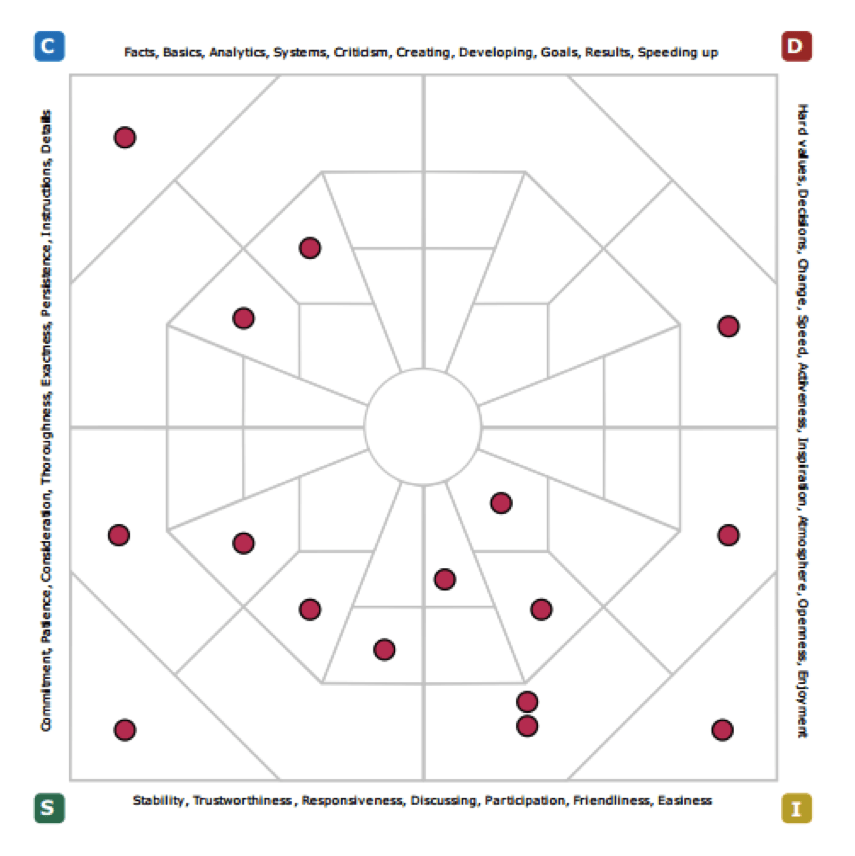
People typically start with the Shotgun Map. The Shotgun Map will show the natural styles of the team members. We can look at the team more objectively because there are no names. The Shotgun Map can be used to view the team at a macro level and focus on the big picture. There is no ideal team make-up. Teams are not usually distributed evenly amongst the 4 DISC quadrants. Context is everything. For example, think of the distribution of a sales team versus an auditing department. We need to understand job functions and goals teams need to accomplish.
We can look at the Shotgun map to help identify strengths and weaknesses. Groups of styles (dots) in any quadrant may be identified as a strength because it’s comfortable for members to handle those behaviors. However, if the team doesn’t have identified behaviors in those DISC quadrants then it may be a liability; always keep in mind the context of the team and goals it is trying to achieve. Weaknesses may occur if there is no concentration of styles in a DISC quadrant, but again context is important.
Concentration of DISC Styles of a Team
A simpler way to look at the DISC Diamond is to divide the model into halves. The top half of the DISC model reflects DISC styles that are task-oriented versus the bottom half, which are DISC styles that are more people-oriented. You can divide the DISC models from left and right. DISC styles are more reserved on the left side, whereas, the DISC styles are more active on the right side.
Dividing the DISC model allows us to focus on concentration of DISC types. People tend to gravitate to roles that fit their style. Think of a job in your career that has been of a struggle and think of the job requirements. Where do they tend to fall on the DISC Diamond? Though many of us can thrive when we are forced out of our comfort zone, most people tend to gravitate to jobs and roles that match their DISC style. That is one reason why we tend to see concentrations of DISC styles when we look at Team DISC Assessments.
Concentrations of styles can amplify strengths of the group, but it can also amplify the areas of development. Similar styles tend to feed off the energy of each other. Make sure to ask the team for examples of when concentrations of styles work and don’t work. Discussions can focus on identifying settings where it happens, but also how it may not benefit to the team’s goal.
Using Team DISC Arrow Map
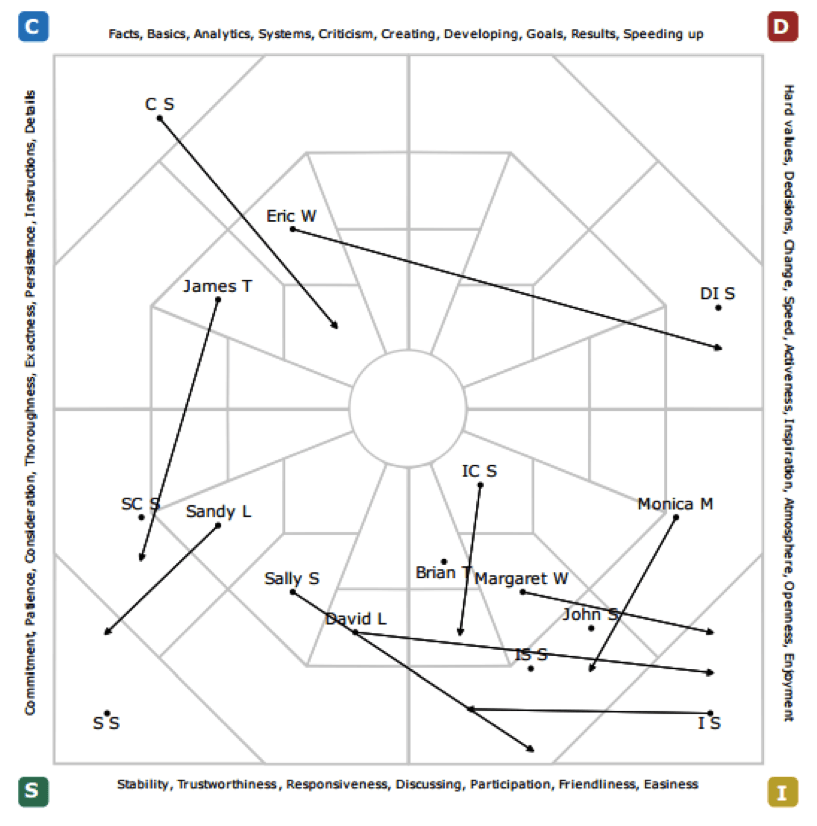
The Team DISC Arrow Map shows the natural style of team members and the adjustments they may be making. Team members needed to have taken the DISC assessment around the same time. Arrows are like a snapshot of the time in which the team member took the DISC questionnaire.
When looking at the arrows, focus on where the arrow is moving towards, but also focus on where the arrow may be moving away from. Also, look to see if there is a pattern of movement. Are the team members’ arrows moving in a similar direction?
Do the arrows make sense? This team may feel more motivated or the need to focus on more people-oriented behaviors. In the sample Arrow Map, there appears to be some pressure, motivation, or demands that are pushing the arrows primarily downwards. Tie the arrows back to the behaviors the team originally identified as necessary to achieve goals. If the arrows don’t make sense, then why don’t they? What changes does the team need to make in its behaviors to achieve the goals?
What Do We Do with DISC Team Profile Results?
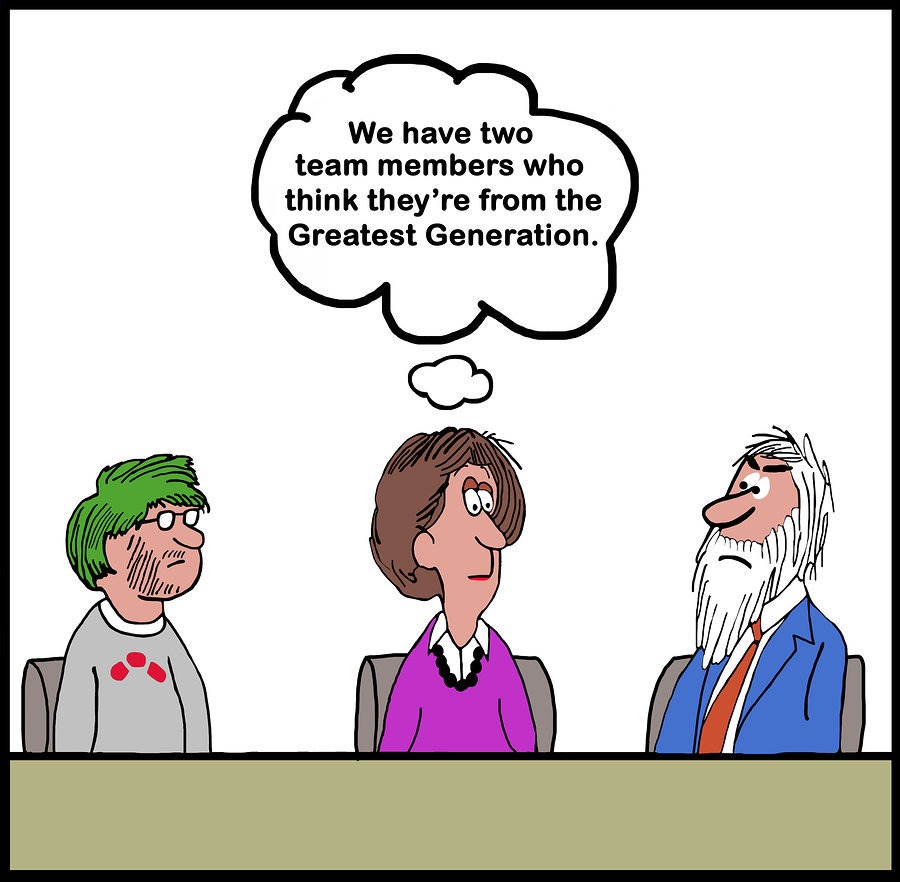
Modifying behavior takes energy. There are two components in the context of the team. The first looks at what individual changes does the team member need to make to help the team. Then, what changes does the team collectively need to make? Remember, we can only control our own behaviors. We cannot force others to change and therefore, team pressures can prevent change. Teams must be committed to making changes; individually and collectively. Team members have different roles and styles, and therefore, may have differing adjustments in order for the team to succeed.
Don’t forget to keep revisiting the exercise results because it’s difficult for the team to argue on goals and behaviors the team itself identified. We have covered just a few sections of the team report. There are different sections of the team report that DISC facilitators favor. The team DISC report is highly valuable even if team members have taken it at different times. Ultimately, teams can use the team DISC results to identify the natural style of each team member, how it affects team dynamics, and what behavioral adjustments can be made to meet the goals of the team.
Team DISC Assessments Pt II: The Manager, on June 15, 2017
Sign up for the next webinar in our continuing series, Team DISC Assessments Pt II: The Manager, on June 15, 2017. How can managers use the DISC tool to better manage, develop, and lead their employees?
